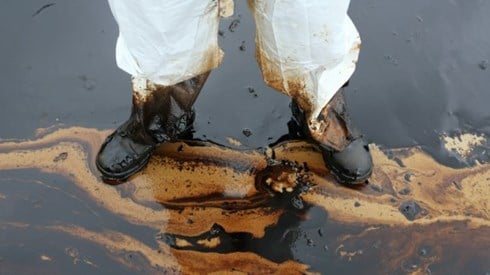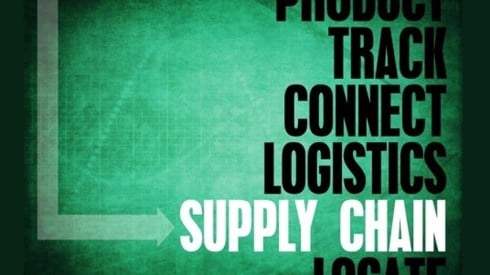Environmental Risks: The Perils of an "Unlikely" Loss Event

September 09, 2019

We know the big ones: oil spills, nuclear waste, trash in the rivers, smog in the air. They're the unintentional outcomes of well-intentioned corporate decisions (think BP's Deepwater Horizon and its lofty exploratory endeavors).
At the onset of any major business initiative, the consideration of risks plays a huge part in how project plans are executed—insurance policies are purchased, a risk assessment matrix emerges, the matrix is worked and re-worked. And for many companies, pollution and environmental risk take center stage, especially in industries such as energy, agriculture, and manufacturing. The reason? The "big boys" (like BP) have proven time and time again that the financial aftermath from a pollution event is grim. From the cost for cleanup to hiring a public relations firm for reputation management, business initiatives are rendered financially unsuccessful, at best. But the mere fact that these businesses acknowledge potential environmental risks gives them a leg up; it is this valuable up-front knowledge that allows them to prepare for the possibility of a loss.
But what about industries where environmental risk isn't so apparent? Self-storage facilities. Dry cleaner chains. Real estate. And others.…
And what of the fundamental issues that warrant a varying approach to mitigating environmental risk for the midmarket? (E.g., what if insurance doesn't exist in the commercial market for "nonstandard" or uncommon risks?) If "specialty" coverages do exist, are they cost-effective for middle market organizations?
The fact is, businesses working in seemingly "safe" industries are at risk for a major financial loss if hidden environmental risks are left uninsured. This has been demonstrated across the United States and around the globe, which warrants a deeper examination of how pollution events impact certain industries.
Here, we'll examine the industries in which environmental risks aren't so obvious and are overlooked more frequently. On the surface, these businesses could, of course, qualify for a commercial policy. But upon further examination, they could highly benefit from the powerful, cost-effective risk coverages afforded by the formation of a captive insurance company, along with the opportunity to promote financial efficiency.
Here, we aim to bring awareness to and start the conversation surrounding industries that are subject to uncommon (but not unsubstantiated) environmental risks, leading to significant losses. Hazards in the air, water, or in the ground are fair game for these industries … and should not be taken lightly.
Self-Storage Facilities: Noxious Fumes and Other Hazards
A large oil and gas operation might be wary of the possibility of chemicals seeping into the ground and affecting the surrounding water supply. A midmarket agricultural organization might be painfully aware of "nonpoint source (NPS) pollution"—the leading source of water contamination for rivers and lakes. But self-storage facilities also contend with environmental risk.
Damaging storms and flooding can impact neighboring properties or waterways such as ponds, streams, or rivers … the runoff might reek of hazardous materials that have pooled on-site. Plant and animal life could also feel the brunt of a pollution event from a self-storage facility. And here's why: According to Corodata,1 an independent information management company, many storage units are used for makeshift apartments, gambling, and/or party hangouts. But of most concern, meth labs.
In June of 2012, law enforcement discovered a methamphetamine lab in Chesterfield, Virginia.2 Another was found in 2015 in Rancho Cordova, a town just outside of Sacramento, California.3 Aside from the hazardous waste and noxious fumes, meth production can be a catalyst for fires and explosions. It also requires toxic chemicals, such as red phosphorus (found in bombs), road flares, and matches, all of which are hazardous.4
When the chemicals burn during the meth-cooking process, it releases noxious fumes into the atmosphere that can cause chemical pneumonia, respiratory damage, and more. Friction alone can ignite micro phosphorus deposits, and traces of the substance can cause fires and explosions up to 4 decades.5
Some units are built in what are now considered unacceptable areas such as floodplains, grandfathered in against modern fire codes, including those requiring sprinkler installation.
In the way of insurance protection in the conventional marketplace, the options are minimal for self-storage operators in situations like these. Policies often exclude pollutants brought into facilities by customers, and if a loss event occurs, business owners would be liable for damages to the facility and to the customers' property (unless there's a clause in their contract agreements with customers). In short, an alternative risk strategy is not only advisable, it is necessary.
Pollution coverages through a captive are broader and fill gaps left by commercial policy exclusions. They also protect business owners from high out-of-pocket costs and provide loss reserves when earned surplus exists.
Dry-Cleaning and Chemical Waste
We see them mostly in densely populated cities like New York, Los Angeles, and Chicago. They're the neighborhood dry cleaners, providing fresh, clean looks to urban professionals. What we don't hear much about are the serious health and environmental risks that stem from chemical waste and contamination from dry cleaner establishments.
The most toxic solvent that is used in the dry-cleaning process is called perchloroethylene, more commonly referred to as "perc." It is difficult to clean up, and over time, it degrades into a potent cancer-causing substance.
According to the US Environmental Protection Agency (EPA),6 perc exposure can negatively impact air and water, putting workers at risk as well as those individuals who may live close to a dry-cleaning facility. The EPA also estimates that the average dry cleaner generates 660 gallons of hazardous waste every year.7
Combatting these exposures with comprehensive insurance ensures that in the event of a lawsuit stemming from pollution or other peril, the financial integrity of the business remains intact. With the formation of a captive insurance company, business owners can be proactive in mitigating the effects of a loss with tailored, supplemental coverage.
The Dangers of Mold, Lead, and Contamination in Real Estate
Typically, "environmental risk" doesn't come to mind when thinking about the commercial real estate industry. But despite inspections and the perception of ongoing maintenance of a property, the effects of pollution can linger and potentially result in a financial loss for the property owner.
Mold, one of the more common risks in real estate, and Legionella (the bacteria that causes Legionnaires' disease) can form in indoor HVAC and plumbing systems. Humid conditions can exacerbate the issue, causing serious health problems for those who are exposed. Other environmental risks include site contamination (toxic chemicals, lead paint, asbestos, carbon monoxide, etc.) and hazardous material storage.
Real estate firms can take a financial hit as a result of legal action from those affected. Business interruption and condemnation of a commercial property can compound the issue, leaving business owners to bear the costs of re-establishment.
Mold, lead, and contamination are just a few of the major environmental risks that can arise in commercial real estate. Supplemental self-insurance by way of a captive addresses liabilities resulting from cleanup, medical costs, and property damage, in addition to legal defense expenses.
Why a Captive Matters in Environmental Risk Mitigation
Midmarket businesses face unique challenges such as the ability to remain competitive in global markets, retaining talent, obtaining funding for special initiatives, and more. But when it comes to environmental risks, midmarket companies should take a cue from large businesses. Taking an introspective look at the possible outcomes of an environmental/pollution event could better prepare businesses to overcome the financial hurdles of a loss event.
Forming a captive insurance company to supplement a conventional policy helps preserve the integrity of business operations. The commercial market may offer the right coverages, but they are often too expensive for the average midmarket business owner. Often, these coverages are not available at all.
Environmental risks might be more subtle than overt … but for many businesses, they exist. It is why captive planning matters.
Businesses should consider working with a captive manager who offers an on-site feasibility study to gauge environmental and other risks, which may be hidden. These perils of a loss event may seem "unlikely" for many businesses, but it's imperative for them to take a closer look and make a definitive determination. It is the only way to understand what they're up against … and how to fight back.
- "5 Most Overlooked Self Storage Risks," by Choi Chow, April 25, 2012, Corodata.com.
- "Meth Lab in Enon Storage Unit," by Travis Ponton and Megan Woo, June 2, 2012, WTVR.com.
- "Man, Nephew Find Meth Lab in Auctioned Storage Unit," by Ben Hooper, July 13, 2015, United Press International, UPI.com.
- "'Speed Kills' … Profits! The Story of Self-Storage and Clandestine Methamphetamine Labs," by Angela Kiper, February 1, 2000, InsideSelfStorage.com.
- Ibid.
- "Dry-Cleaning Sector Regulatory Update," United States Environmental Protection Agency, February 2019, EPA.gov.
- "Dry Cleaners: The Environmental Scourge of Commercial Real Property," by Larry Schnapf, The Practical Real Estate Lawyer, November 2014, environmental-law.net.
September 09, 2019
